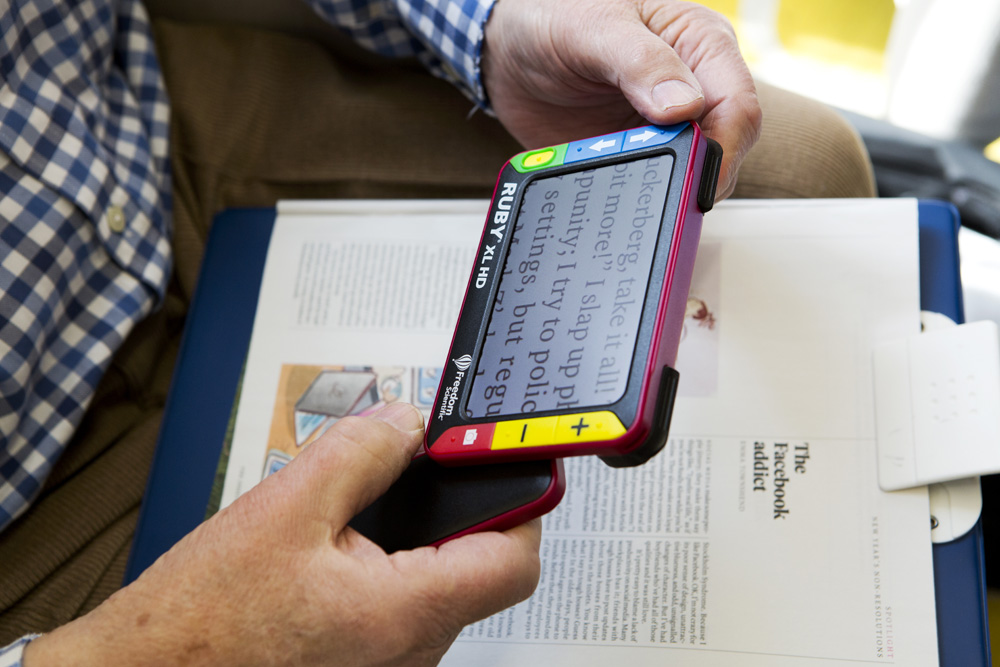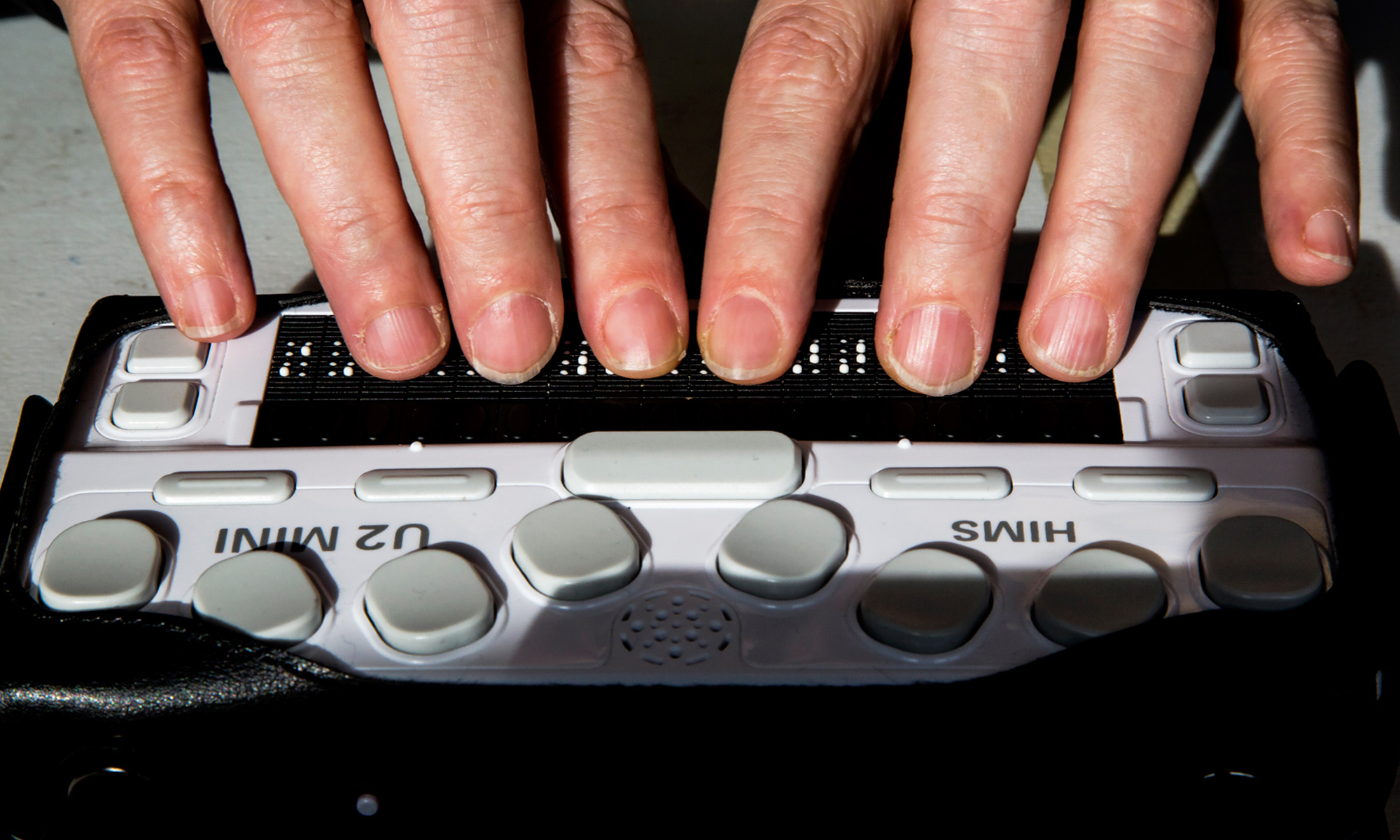AI-Powered Visual Aids: Redefining Support for the Blind
Wiki Article
Discover Ingenious Devices Developed for the Aesthetically Damaged
The development of innovative devices for the aesthetically damaged stands for a substantial innovation in access and independence. Technologies such as wise glasses with AI capacities and mobile applications developed to give auditory descriptions are improving day-to-day experiences for users. In addition, wearable gadgets that utilize haptic comments improve ecological awareness, while modern-day Braille developments offer new means to involve with message. As these devices remain to progress, their effect on the lives of those with aesthetic disabilities raises vital concerns concerning the future of inclusivity and autonomy in various facets of life. What lies in advance in this technological landscape?Smart Glasses for Navigation

Smart glasses made for navigating are changing the method aesthetically impaired people communicate with their environment. These innovative devices make use of a mix of cam innovation, expert system, and auditory responses to supply real-time details about environments. By employing challenge detection systems, wise glasses can inform users to prospective hazards, making it possible for safer mobility in both familiar and unfamiliar settings.
The integration of GPS modern technology further enhances navigating capacities, permitting customers to get acoustic instructions as they relocate. This hands-free technique not just fosters self-reliance yet also encourages visually impaired individuals to browse metropolitan landscapes with raised self-confidence. Additionally, lots of wise glasses are outfitted with functions that determine landmarks and street signs, supplying contextual information that enhances the user experience.
In addition, the growth of these devices is continually progressing, with companies working to boost the precision of things recognition and expand the series of navigational functions. As wise glasses become more easily accessible and economical, they hold the prospective to substantially transform day-to-day life for aesthetically damaged individuals. Ultimately, these ingenious tools stand for an important action toward inclusivity, offering improved wheelchair and a higher feeling of freedom for people navigating the globe around them.

Mobile Apps for Daily Living
How can mobile applications boost the everyday lives of aesthetically impaired people? Mobile applications are revolutionizing the method visually damaged individuals navigate their atmospheres, manage day-to-day jobs, and accessibility details. These applications provide vital support via various capabilities, cultivating independence and boosting lifestyle.Numerous ingenious mobile apps are designed especially for everyday living. Apps like Be My Eyes link aesthetically impaired customers with sighted volunteers through video telephone calls, allowing them to obtain real-time help with jobs such as reviewing labels or browsing unfamiliar spaces. Seeing AI, created by Microsoft, uses synthetic knowledge to define surroundings, checked out message, and identify things, successfully transforming a smartphone right into a powerful tool for day-to-day help.
In addition, navigation apps customized for the visually impaired, such as Aira and BlindSquare, offer audio-based instructions and ecological info, enabling customers to traverse their surroundings safely and with confidence. Beyond navigating and immediate assistance, mobile apps also sustain organization and task administration, with functions that aid users establish suggestions, produce order of business, and track appointments. In recap, mobile applications work as important sources, empowering aesthetically damaged people to lead more independent and fulfilling lives.
Wearable Technologies for Help
Empowerment via technology is progressively evident in the realm of wearable tools created to assist visually impaired individuals. These cutting-edge tools incorporate seamlessly into every day life, improving navigation and giving essential comments to users. For example, clever glasses furnished with cameras can check out and acknowledge faces message aloud, permitting individuals to interact even more confidently in social and expert settings.One more noteworthy innovation is making use of haptic feedback systems in wearable devices. These systems utilize resonances or other responsive signals to share info about the individual's setting, such as obstacles or modifications in terrain, enhancing mobility and safety. Wearable modern technologies likewise consist of wristbands that connect to smart devices, informing users to notices through subtle vibrations, hence improving connectivity without reliance on visual signs.
As these innovations remain to evolve, they are not just enhancing independence for visually impaired individuals but additionally fostering a greater sense of addition in society. By bridging the void between challenges faced in everyday living and the possibility for autonomy, wearable modern technologies act as pivotal devices in the pursuit for equality and empowerment for those with visual problems.
Audio Summary Devices
Audio description tools play a critical role in enhancing availability for aesthetically impaired individuals, providing them with the capability to involve with aesthetic media. Braille displays and notetakers. These tools offer narrated descriptions of crucial visual components in movies, television shows, and live performances, ensuring that individuals can totally understand the context and emotions shared through visualsAudio description can be integrated right into different platforms, including streaming solutions, cinema screenings, and live theater. Many preferred streaming services currently consist of audio summary as an access attribute, enabling audiences to choose it conveniently. In addition to conventional media, specialized apps likewise exist, providing audio summaries for art exhibitions, museums, and various other social events.
The effectiveness of audio summary pivots on the skill of the narrators, that must convey aesthetic information succinctly without interfering with the initial audio. Advancements in this field are also leading the means for even more tailored experiences, where individuals can change the level of detail and pacing according to their preferences.
Braille Innovations and Instruments
Braille devices and innovations have actually considerably transformed the method visually damaged individuals communicate with text and information. Modern advancements have actually caused the advancement of versatile devices that boost proficiency and freedom among users. Especially, Braille display innovations have advanced, enabling for dynamic reading experiences. These devices convert electronic message into Braille, making it possible for users to access a substantial range of details on tablets, computers, and smartphones.
Furthermore, mobile Braille notetakers integrate conventional Braille input with modern performances, facilitating note-taking, organizing, and record editing and enhancing on the go. Assistive technology for the blind. These small devices typically feature text-to-speech capacities, linking the void between Braille and acoustic info
Furthermore, ingenious Braille printers have arised, permitting customers to generate Braille tags, papers, and instructional products successfully. This ease of access cultivates greater involvement in academic and professional settings, ultimately advertising inclusivity.
Additionally, research study right into wise Braille modern technologies remains to Screen readers for the blind expand. Devices that integrate expert system are being discovered to offer real-time navigation help and contextual details, enhancing the customer experience in diverse settings. In general, these developments show a dedication to encouraging aesthetically damaged people with technology, ensuring they can easily gain access to and engage with the world around them.

Verdict
The innovation of cutting-edge devices for the aesthetically damaged significantly improves freedom and high quality of life. These innovations not only foster greater addition however additionally advertise autonomy in day-to-day activities, ultimately adding to an extra equitable and obtainable culture for aesthetically damaged people.As wise glasses become much more budget friendly and available, they hold the possible to considerably transform day-to-day life for visually damaged customers. Mobile apps are changing the way aesthetically impaired users navigate their atmospheres, handle everyday jobs, and accessibility info. Apps like Be My Eyes connect aesthetically damaged customers with sighted volunteers via video calls, enabling them to obtain real-time assistance with tasks such as reading labels or navigating strange rooms.Furthermore, navigation apps customized for the visually damaged, such as Aira and BlindSquare, offer audio-based instructions and ecological info, allowing users to traverse their surroundings safely and confidently.The development of ingenious devices for the visually impaired dramatically improves self-reliance and quality of life.
Report this wiki page